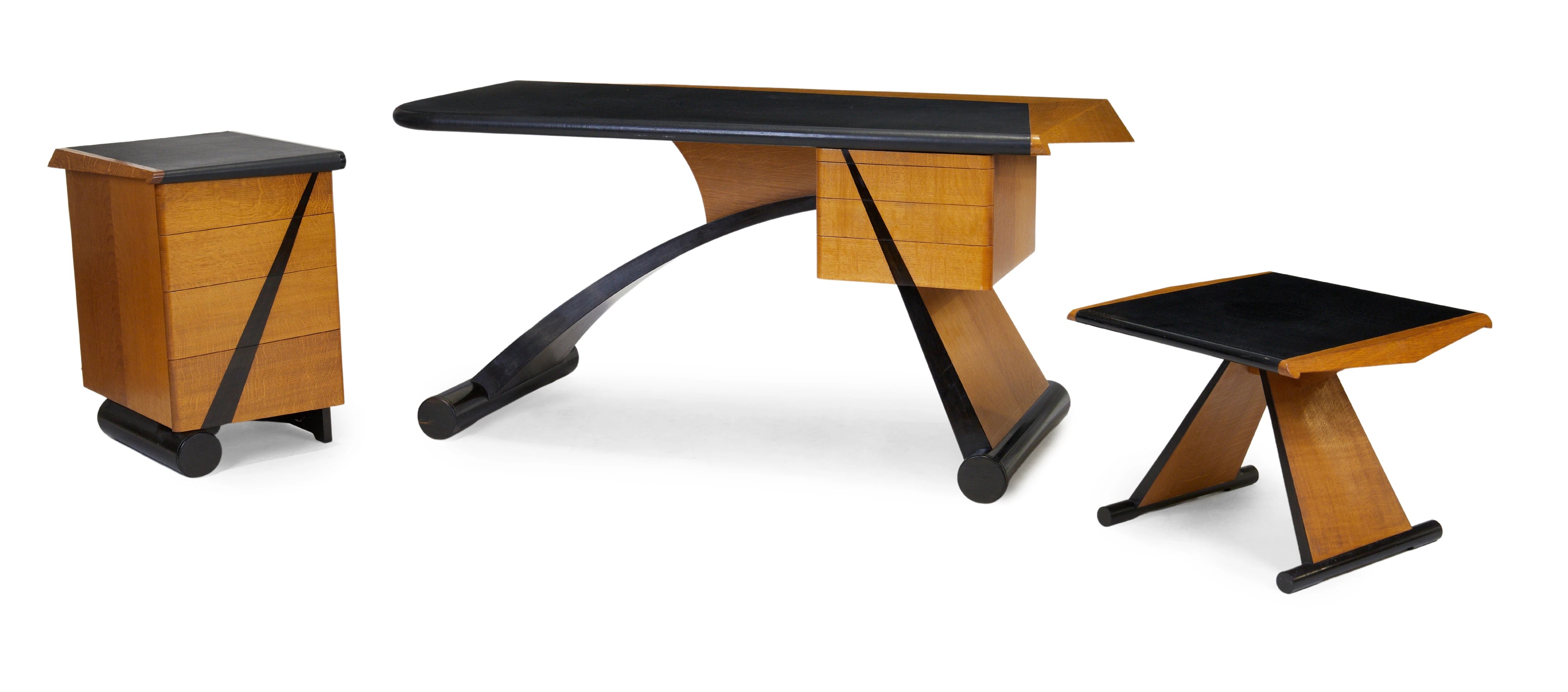Roseberys’ September 2nd Design sale is led by a 'Poltrona di Proust' armchair by Alessandro Mendini for Studio Alchimia. The present example was hand-painted by Franco Migliaccio between 1985-1988, making it one of the earliest iterations of the seminal postmodern design. It was originally created for the 1978 ‘Room of the Century’ exhibition at Palazzo dei Diamanti in Ferrara and further examples exist in the permanent collections of the Musée des Art Décoratifs, Paris, Vitra Design Museum and in the Victoria and Albert Museum, London. It comes to auction from a UK private collection and is estimated at £10,000-£15,000.
Lot 21: Alessandro Mendini (1931-2019) for Studio Alchimia 'Poltrona di Proust' armchair, 1985-1988
Estimate: £10,000 - £15,000
Born in Milan in 1931, Mendini created unrestrained, deeply personal works that redefined 20th century Italian design and architecture. He was a significant figure in Italy’s Radical design movement in the 1960s and 1970s and later Postmodernism. His intellectual approach to design prioritised the decorative, the playful and the distinct, freeing practitioners from the rigid functionalism of 20th century modernism and industrial design processes.
Mendini joined Studio Alchimia in 1976, the same year his conceptual design process for the Poltrona Di Proust commenced. He wrote the group’s manifesto in 1985, positing a need to “[furnish] others with a proof of sentimental thought” and further elucidating the group’s formalist perspective. Mendini believed that “the “beauty” of the object is in the love and magic with which it is suggested in its soul.”
Mendini developed the idea for the chair while working on a fabric pattern for Cassina, which was to be a meditation on the milieu of author Marcel Proust, from whom the chair takes its name. In the course of his research he discovered the kitschy Neo-Baroque armchair which was to form the basis of his furniture design. Proust’s interest in the power of art as a vehicle for demonstrating subjective perception aligned well with the preoccupations of Studio Alchimia, and is also embodied in the painterly technique of pointillist artist Paul Signac; a patchwork of sensory impressions that cohere into something greater than the sum of their parts. The original Proust chair was handpainted by Prospero Rasulo and Pier Antonio Volpini by projecting a Signac painting directly onto the chair. The method of Signac, who employed densely applied polychromatic brushstrokes to build up painted scenes, is mimicked in this example by the hand of Franco Migliaccio. As a result, the faux-antique bergère is re-designed and made new by Mendini’s approach, rejecting functionalist design through the synergy of a readymade form with a profusely hand-painted surface.
“Mendini’s singular vision holds a crucial place in design history, and we’re thrilled to present the work for which he is best known - a landmark of postmodern design that continues to inspire renewed interest today.” - Nigel Dawson-Ellis, Head of Design at Roseberys.
Lot 22: Fred Baier (b.1949), Unique office suite, comprising desk, chest of drawers and side table, 1986
Estimate: £8,000 - £12,000
Further postmodern highlights in the sale include a unique office suite by British designer Fred Baier, acquired as a private commission by the current owner in 1986. Baier's extraordinary, eclectic body of work is testament to his ability to blur the lines between art and design, to elevate an object often seen (or unseen) as utilitarian to one of great beauty in his own distinctive and visually striking vernacular. Baier's work is held in several major collections, including the Victoria and Albert Museum, Crafts Council, London and Templeton College, Oxford.
In the studio pottery section of the auction, a rare 1960 Hans Coper stoneware dish is expected to attract significant interest. Formerly in the collection of British couturier Neil Munro ‘Bunny’ Roger, it sold at Sotheby’s in 1998 to a private UK buyer. Roger is known to have commissioned works directly from Coper, and it could be surmised that this was also a private commission, given its departure from Coper’s established forms at the time of production. Bunny’s brother, Alan, championed British studio pottery and inspired Coper and Lucy Rie to produce special containers to house his bonsai collection.







